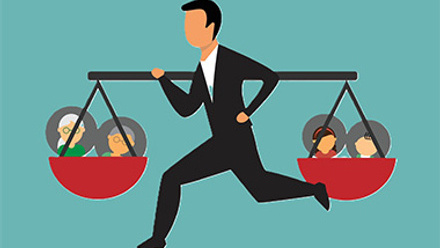REBA Inside Track: Resilience can’t survive without wellbeing

Employee wellbeing may ebb and flow depending on circumstance, but resilience should theoretically ensure that it doesn’t dip to a dramatically low level. If an organisation is resilient then wellbeing will be easier to maintain, as everyday stressors and adversity won’t grind people down so easily.
Since the pandemic, many organisations have implemented a wellbeing benefits strategy that focuses on mental health and keeping wellbeing levels on an even kilter. Broadly speaking, HR has understood the importance and value of resilience that is modelled from the top down, and helps employees bounce back from setbacks. But one cannot work without the other, as Aon’s Rising Resilient (2020) report highlights, only 15% of employees felt resilient in organisations that don’t offer wellbeing initiatives, compared with 45% of those working in organisations that do offer wellbeing benefits. Clearly, the two are symbiotic and can’t thrive without the other.
The business case for having wellbeing benefits is widely known, but the impact they can have on recruitment, retention, employer brand and culture is worth taking into account, especially with the current climate. As the great resignation and skills shortages continue to be a challenge, ensuring that your wellbeing benefits are fit for purpose and fostering resilience in the background is key.
Reward and benefits professionals should therefore ensure that their wellbeing strategy is in good health, up to date for the year ahead and consider an audit.
Ways to check the impact of your wellbeing strategy include:
- have sickness and absences increased?
- if you have mental health first aiders, are they reporting more disclosures? Can you act on that data?
- check with providers about uptake. If it’s high, are people being impacted by work, and if it is low, is the benefit still useful?
- are there groups of employees that are less engaged with certain wellbeing initiatives?
Considering those questions and accessing any data available from providers can offer a clearer picture on whether your wellbeing strategy, and therefore your employees’ resilience, is healthy. It can also be a window into the company culture, stress levels and workloads.
Wellbeing benefits have a big role to play in how resilience is fostered and nurtured. As employees look set to move jobs, skill shortages become more acute and the cost of living spirals, employees will need to be able to thrive through these challenges rather than just survive.
The author is Elizabeth Howlett, associate content editor at REBA.






